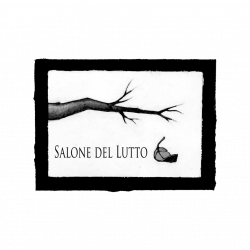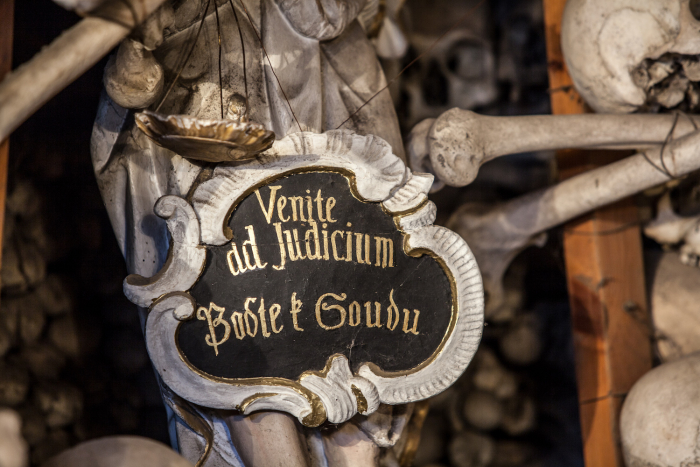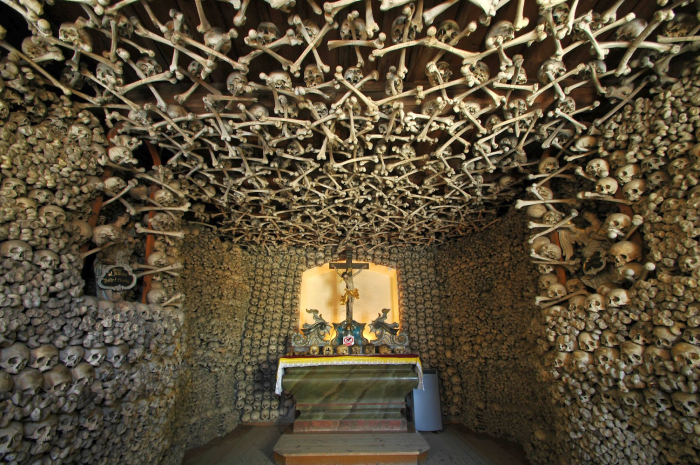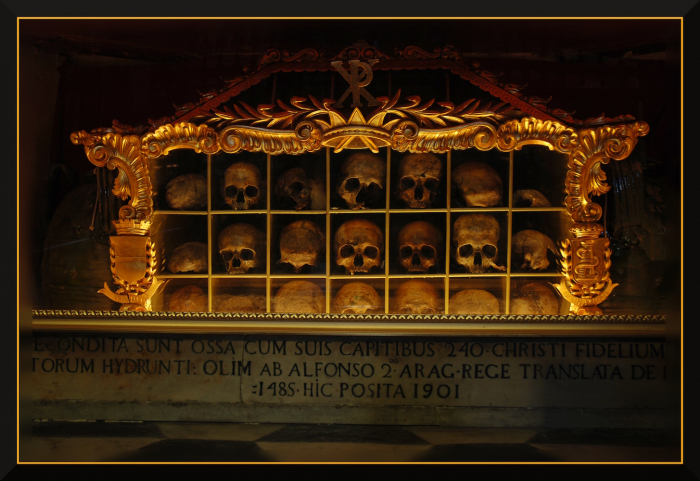Kyrie eleison, God have mercy. Have mercy on the bones and skulls of the 40,000 bodies in Sedlec that draw coats of arms and crowns, become candle holders and talk with angels equipped with wings and golden trumpets.
The Sedlec ossuary, in the Czech Republic, is a small Christian chapel located in the Cemetery Church of All Saints. Too close to death, in 1400 the crypt of the chapel became the depository of bones from ancient sepulchres, which in 1870 were used to create complicated decorations.
Kyrie eleison, God have mercy. Have mercy on the skulls resting in Hallstatt, painted as if they were primped for a debutante ball, wearing wreaths of leaves and flowers like crowns. One name, two dates: that was certainly their last ball.
The Beinhaus (house of bones) in Hallstatt, Austria, is located in the chapel of Saint Michael. There lie about 700 painted skulls, arranged on rows of wooden shelves and grouped by family. Catholics and Protestants, placed side by side as they used to be in real life, all social stratifications cancelled.
Kyrie eleison, God have mercy. Have mercy on the dead of Czermna, exterminated by smallpox in the Eighteenth century and forming today walls and ceilings, one after another, until they embrace Christ on the cross in a breathtaking horror vacui.
In Czermna, Poland, a priest that started the building of the chapel had the idea of these unusual decorations. He believed that the body was nothing more than a container for the soul and could be used otherwise after death. Therefore the inside of an externally bare building was turned into a triumph of bones.
Kyrie eleison, God have mercy. Have mercy on those who invoke you in Évora: Nós ossos que aqui estamos pelos vossos esperamos (“We bones that are here, for yours await”). There are many of them, maybe 5000, cemented in the walls to remind us of the transience that we all have in common.
The Capela dos Ossos, in Évora, Portugal, is located inside the church of Saint Francis. Almost 19 metres of a lugubrious – but also extremely rich – passage, where death is everywhere, in the remains of the Franciscan friars that make up the decorations and in the scenes about death painted on the walls.
Kyrie eleison, God have mercy. Have mercy on the 813 martyrs of Otranto, killed by the Ottomans under the command of Gedik Ahmed Pasha, because they had refused to convert to Islam after the fall of the city. They are gathered in three big shrines, behind a Virgin Mary with Baby Jesus. They quietly watch.
Three names stand out among those who were killed in 1480, on the eve of the Feast of the Assumption. Tailor Antonio Pezzulla, the first beheaded, whose body is told to have remained upright until all his comrades were executed; the Ottoman Bersabei, who converted to Christianity as soon as he realized how pure and strong was the others’ faith and was killed himself; finally, archbishop Stefano Pendinelli, whose severed head was brought in procession through the town streets.



